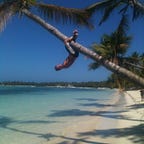LEFT TURNING TENDENCIES
You’re lined up on the runway and cleared for take off. As you advance the throttle and start rolling, the airplane veers left without you telling it to do so!
So, what is happening?
There are four reasons why your airplane pulls to the left! These are called left turning tendencies and here’s how they work:
TORQUE
The first effect is due to TORQUE. Sir Isaac Newton’s 3rd Law states that “for every action, there is an equal and opposite reaction.” Most airplanes have clockwise rotating engines when viewed from the cockpit. This is where torque comes into play.
As you advance the throttles, the right spinning propeller forces the left side of the aircraft down toward the runway. The left tyre consequently has more friction with the ground than does the right tyre. The aircraft veers left.
Torque is a force causing rotation. In particular, torque is the force created within an engine, which causes rotation of the rotating parts, e.g., the crankshaft. Torque is a measure of the load experience, expressed in pounds per inch or feet. A quantity of torque, or twisting moment, is involved in the measurement of the engine brake horsepower (bhp).
TORQUE = FORCE x DISTANCE (at right angles to the force)
P-FACTOR
P-Factor, also called ‘assymetric propeller loading’, is when the downward moving blade of the propeller takes a “bigger bite” of the air than the upward moving blade.
The downward moving blade has a higher alpha (AoA/Angle of Attack) and thus creates more thrust. This in turn induces a left yawing motion. This is very common for tailwheel airplanes when departing, or generally when flying at a high alpha.
GYROSCOPIC PRECESSION
A spinning propeller is essentially a gyroscope. Like gyros, propeller have two properties; rigidity in space and precession.
As you apply a force to the disc the resultant force is felt 90 degrees in the direction of rotation. (see photo)
SLIPSTREAM
When flying slow with a fast spinning propeller (during takeoff) air accelerated rearwards follows a corkscrew pattern, wrapping around the fuselage and hitting the left side of your tail. This creates a left yawing motion.
So what can pilots do about it?
The solution to counter these four left-turning tendencies is to;
“STEP ON THAT RIGHT RUDDER!!!!!!”
